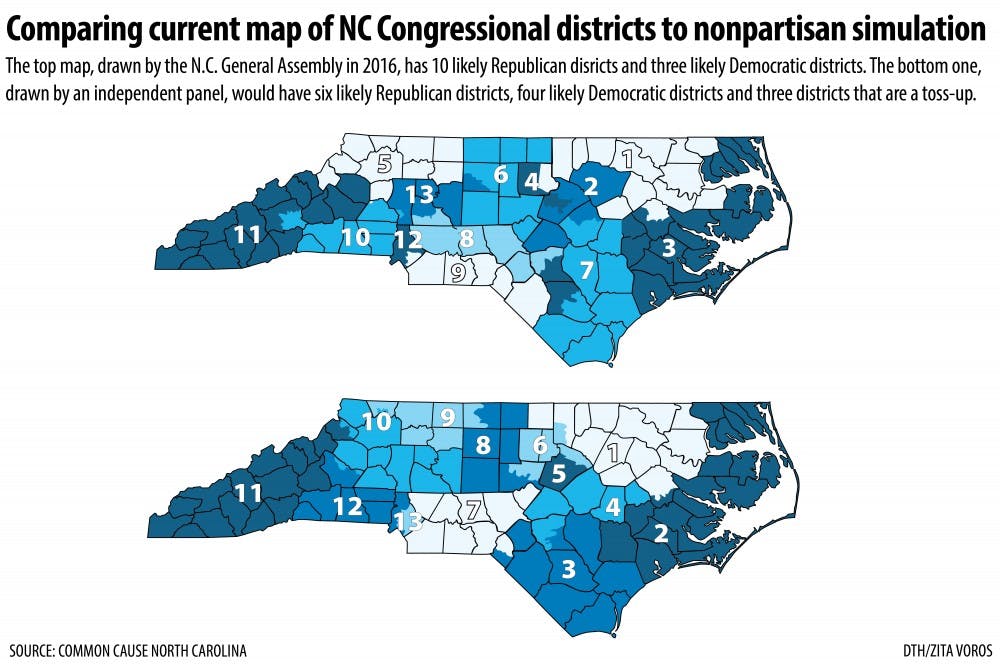The group — sponsored by Common Cause North Carolina, a nonpartisan transparency-focused organization, and Duke University — produced a map without considering voter history and registration.
The map contrasts with those drawn by the N.C. General Assembly, said Bob Phillips, executive director of Common Cause N.C..
Under current laws, districts are drawn by the state legislature every 10 years. The congressional districts drawn by the Republican-controlled legislature in 2011 were ruled unconstitutional due to racial gerrymandering in February.
“We feel North Carolina has a broken redistricting process,” Phillips said. “Redistricting is a game, and it’s all about the majority party holding power by gerrymandering the districts to their favor.”
Both parties in North Carolina have a long history of gerrymandering, said Tom Ross, the former UNC-system president and Terry Sanford Distinguished Fellow at Duke’s Sanford School of Public Policy.
Ross, one of the leaders of the collaboration between Common Cause N.C. and Duke, said congressional districts shouldn’t be drawn with political objectives.
The judges, four Democrats and four Republicans, drew the districts to be compact and compliant with the Voting Rights Act, said Phillips.
According to analysis by Common Cause N.C., the districts would be more competitive and balanced.




